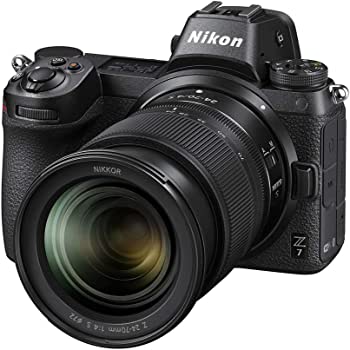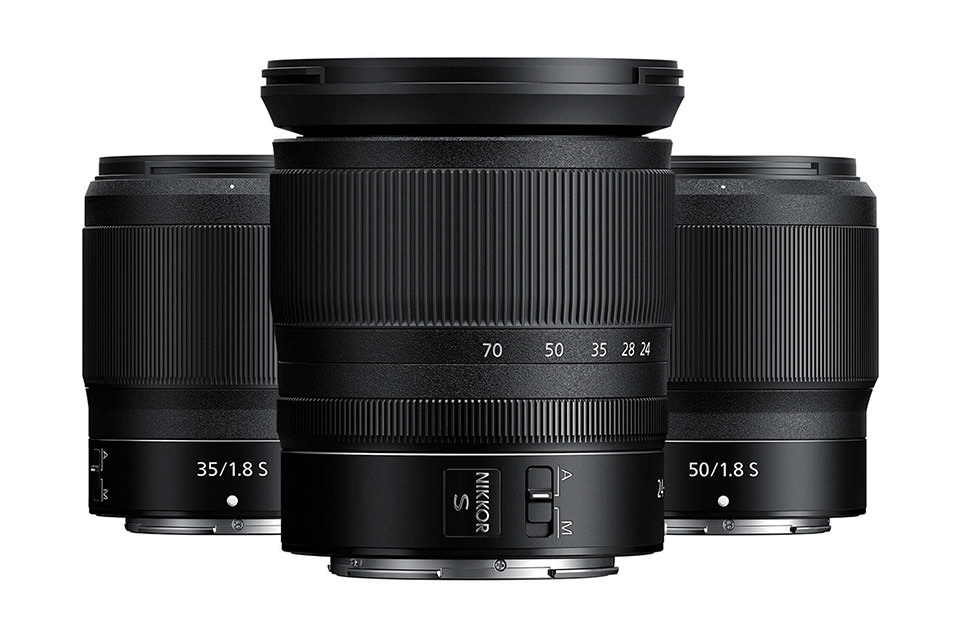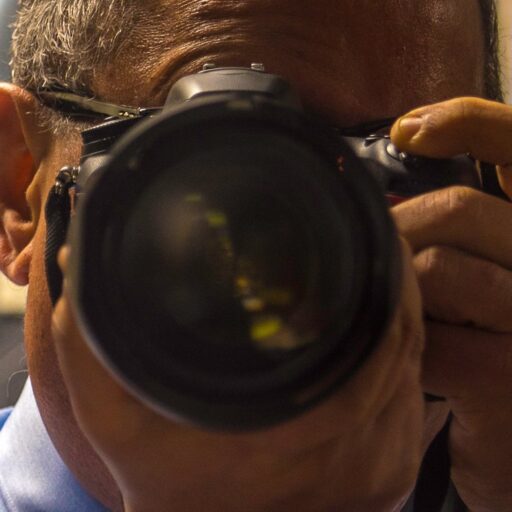
Here are some key things you need to know about Nikon Z cameras:
- Mirrorless Technology: Nikon’s Z series cameras are mirrorless, which means they do not have a reflex mirror. Instead, they use an electronic viewfinder and a sensor-based autofocus system.
- Full-Frame Sensors: All of Nikon’s Z series cameras have full-frame sensors, which means they are capable of capturing high-resolution images with excellent low-light performance.
- Z Mount System: Nikon’s Z series cameras use the Z mount system, which is a new lens mount that allows for faster autofocus, better image quality, and more versatility in lens design.
- In-body Image Stabilization: Most of Nikon’s Z series cameras feature in-body image stabilization, which helps to reduce camera shake and produce sharper images.
- Video Capabilities: Nikon’s Z series cameras are also capable of capturing high-quality video, with features like 4K UHD recording, slow-motion video, and focus peaking for manual focusing.
Connectivity: The cameras feature built-in Wi-Fi and Bluetooth for easy connectivity and sharing of images, as well as remote camera control.
Overall, Nikon’s Z series cameras are a great choice for photographers who want the latest technology in a lightweight and compact package, without sacrificing image quality or performance.
Best Nikon Z camera
Nikon’s Z series of mirrorless cameras are all excellent choices, but the “best” one for you will depend on your specific needs and preferences. Here are a few of the top models to consider:
- Nikon Z7 II – This is Nikon’s high-end mirrorless camera, with a 45.7-megapixel sensor, dual card slots, and a 493-point autofocus system. It’s a great choice for professional photographers who need the highest level of image quality and performance.
- Nikon Z6 II – The Z6 II is a more affordable option that still packs a punch with its 24.5-megapixel sensor, 273-point autofocus system, and 5-axis in-body image stabilization. It’s a great all-around camera for both stills and video.
- Nikon Z50 – If you’re looking for a more compact option, the Z50 is a great choice. It has a 20.9-megapixel sensor, a 209-point autofocus system, and a flip-down touchscreen. It’s also more affordable than some of Nikon’s higher-end mirrorless cameras.
Ultimately, the best Nikon Z camera for you will depend on your specific needs and preferences, as well as your budget. Consider what types of photography you’ll be doing, how much you’re willing to spend, and which features are most important to you before making your decision.

Nikon Z compare to other mirrorless
Nikon’s Z series of mirrorless cameras are highly competitive with other mirrorless camera brands in terms of features, image quality, and performance. Here are some key differences and similarities between Nikon’s Z cameras and other popular mirrorless cameras:
- Sensor Size: Nikon’s Z series cameras all have full-frame sensors, which provide excellent low-light performance and image quality. Other mirrorless cameras may have smaller APS-C or micro four thirds sensors, which can impact image quality, especially in low light.
- Autofocus System: Nikon’s Z series cameras feature advanced autofocus systems with a large number of autofocus points and fast processing speeds. Other mirrorless cameras may have fewer autofocus points or slower processing speeds.
- Lens Selection: Nikon’s Z mount system is relatively new, so the selection of lenses available is not as extensive as other mirrorless camera brands. However, Nikon has been expanding their lens lineup and there are now several high-quality lenses available for the Z mount system.
- Image Stabilization: Most of Nikon’s Z series cameras have in-body image stabilization, which helps to reduce camera shake and produce sharper images. Some other mirrorless cameras may rely on in-lens stabilization, which can be less effective in certain situations.
- Video Capabilities: Nikon’s Z series cameras are capable of capturing high-quality video with features like 4K UHD recording, slow-motion video, and focus peaking for manual focusing. Other mirrorless cameras may offer additional video features such as higher frame rates, 10-bit video output, and more advanced video codecs.
Overall, Nikon’s Z series of mirrorless cameras are highly competitive with other mirrorless camera brands in terms of features, image quality, and performance. Choosing the right camera will depend on your specific needs and preferences, as well as your budget.
Can I use my old lenses on Nikon Z?
Yes, it is possible to use your old lenses on a Nikon Z camera with the use of an adapter. Nikon has released the FTZ Mount Adapter, which allows you to use most F-mount lenses with Nikon’s Z series cameras.
The FTZ adapter provides full autofocus and exposure metering functionality with most F-mount lenses, so you can use them just as you would on a traditional Nikon DSLR. However, some older lenses may not be fully compatible with the adapter and may require manual focus or exposure adjustments.
It’s important to note that using an adapter may impact the performance of your lenses, as they may not be optimized for the new Z mount system. However, the FTZ adapter is a great way to extend the life of your existing lens collection and make the transition to a new camera system more affordable.
Does the Nikon Z cameras have WIFI?
Yes, all of Nikon’s Z series cameras have built-in Wi-Fi connectivity. This allows you to easily transfer images and videos wirelessly to your smartphone, tablet, or computer. You can also use the Nikon SnapBridge app to remotely control your camera, view images on your device, and add location and date/time data to your photos. The Wi-Fi connectivity on Nikon’s Z cameras is also useful for firmware updates, which can be downloaded and installed wirelessly. Overall, the built-in Wi-Fi on Nikon’s Z cameras makes it easy to share and manage your photos and videos on the go.

Why are mirrorless cameras better?
Mirrorless cameras have several advantages over traditional DSLR cameras, including:
- Size and Weight: Mirrorless cameras are generally smaller and lighter than DSLRs, making them more portable and easier to carry around.
- Electronic Viewfinder: Mirrorless cameras use an electronic viewfinder (EVF) instead of an optical viewfinder, which provides a more accurate representation of the final image. Additionally, the EVF can display additional information, such as a histogram, in real-time.
- Autofocus: Mirrorless cameras often have faster and more accurate autofocus systems, thanks to their use of on-sensor phase detection autofocus points.
- Video Capabilities: Mirrorless cameras are often designed with video in mind, and as a result, offer more advanced video features, such as 4K UHD recording, slow-motion video, and focus peaking.
- Silent Shooting: Since there is no mirror to flip up and down during image capture, mirrorless cameras are capable of silent shooting, which is useful for capturing candid moments or in quiet environments.
Overall, mirrorless cameras offer several advantages over traditional DSLRs, making them a great choice for photographers who value portability, advanced features, and versatility.
What are the essential camera lenses for Nikon z?
The essential lenses for Nikon Z cameras will depend on your specific needs and shooting style. However, here are a few lenses that are considered to be versatile and useful for a range of photography:
- NIKKOR Z 24-70mm f/4 S – This lens is a standard zoom lens that covers a wide range of focal lengths, from wide-angle to short telephoto. It’s a great all-purpose lens for travel, landscapes, and everyday photography.
- NIKKOR Z 14-30mm f/4 S – This lens is an ultra-wide-angle zoom lens that is ideal for landscape photography and architecture. Its wide-angle view and ability to capture a lot of details in the frame make it a must-have for landscape photographers.
- NIKKOR Z 50mm f/1.8 S – This lens is a fast prime lens that is ideal for portraits, street photography, and low-light situations. Its fast maximum aperture of f/1.8 allows for excellent low-light performance and shallow depth of field.
- NIKKOR Z 70-200mm f/4 VR S – This lens is a telephoto zoom lens that is great for sports, wildlife, and event photography. Its versatile zoom range and image stabilization make it a must-have for photographers who need to capture distant subjects.
Overall, these lenses offer a good starting point for building a versatile kit for Nikon Z cameras. Other lenses, such as macro lenses or longer telephoto lenses, can be added based on your specific needs and preferences.
